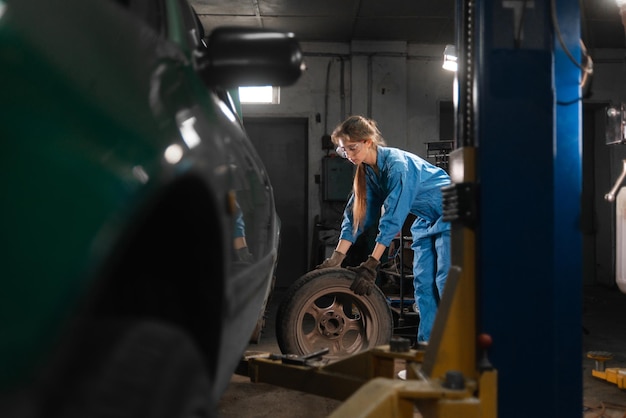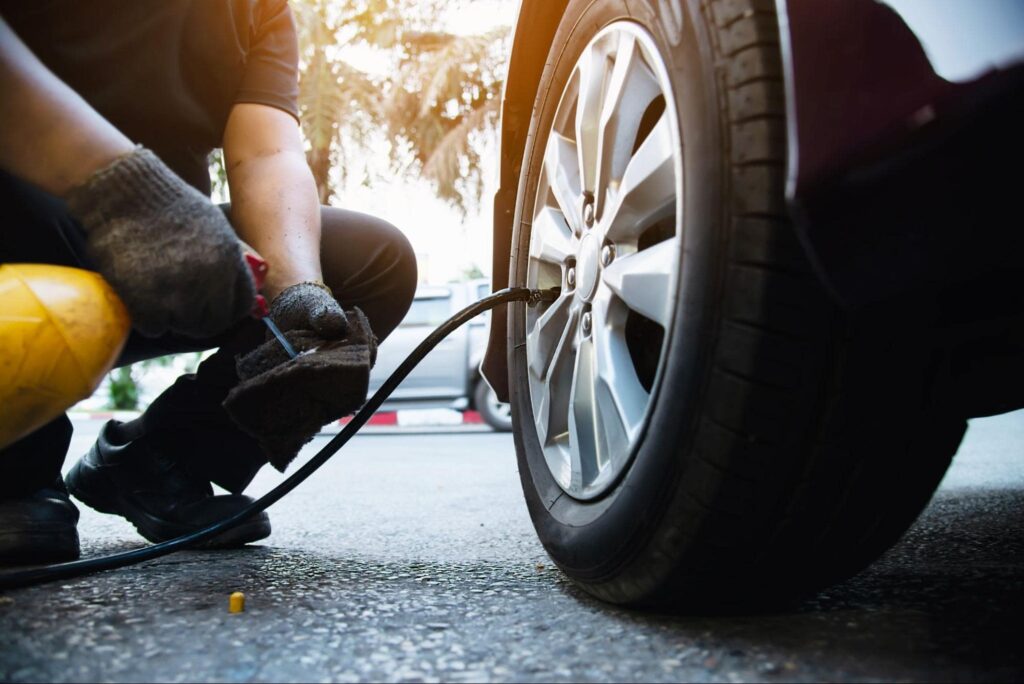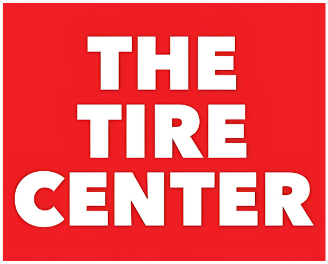How Wheel Alignment Affects Tire Noise and Ride Comfort

Most drivers know that wheel alignment helps with tire life and fuel efficiency, but what many don’t realize is how much it affects noise and ride comfort. That constant humming, droning, or vibration you feel in your seat or steering wheel might not just be worn tires—it could be a misalignment issue. At The Tire Center in Santa Ana, we often see customers frustrated by loud, uncomfortable rides, only to find the solution lies in something as simple as a proper alignment. Let’s explore how alignment plays a key role in reducing tire noise and keeping your ride as smooth as possible. What Exactly Is Wheel Alignment? Wheel alignment is the adjustment of your car’s suspension system, which connects the wheels to the vehicle. Alignment doesn’t adjust the wheels or tires themselves but rather the angles at which they meet the road. When the angles are correct, your car tracks straight, your tires wear evenly, and you get a quiet, comfortable ride. The main alignment angles are: Toe: The inward or outward angle of your tires when viewed from above. If your tires are “toed in” or “toed out” too much, they can scrub against the pavement and create excessive noise. Camber: The inward or outward tilt of your tires when viewed from the front. Incorrect camber can cause uneven wear patterns, which often lead to a droning or roaring noise as you drive. Caster: The angle of your steering axis when viewed from the side. While caster doesn’t directly affect noise, improper caster can impact steering stability, which adds to driver discomfort. Thrust Angle: This measures whether your rear wheels are aligned with the vehicle’s centerline. If they’re off, your car may feel like it’s crabbing sideways, producing vibration and noise. How Misalignment Creates Tire Noise When your wheels are out of alignment, they no longer make uniform contact with the road. Instead, certain parts of the tire’s tread bear more load than others. This uneven pressure leads to unusual wear patterns such as cupping, feathering, or scalloping. Here’s how these patterns translate into noise: Cupping: Produces a rhythmic thumping sound, often mistaken for a bad wheel bearing. Feathering: Creates a high-pitched humming or whistling noise that gets louder with speed. Scalloping: Leads to a low, droning vibration that makes highway driving especially uncomfortable. Not only is the noise annoying, but it’s also a warning sign that your tires won’t last much longer if the alignment issue isn’t corrected. How Alignment Influences Ride Comfort Comfort is about more than just the absence of noise. A properly aligned vehicle glides down the road with minimal effort from the driver. When alignment is off, you may experience: Steering Pull: The car drifts left or right, forcing you to constantly correct. Steering Wheel Vibration: Caused by uneven tire contact with the road. Rough Ride: Misalignment puts stress on suspension components, amplifying every bump and pothole. Fatigue: The constant need to fight the steering wheel makes long drives more tiring. When your wheels are aligned, your car feels balanced and predictable, reducing both driver stress and passenger discomfort. The Connection Between Alignment and Tire Longevity Noise and comfort issues are frustrating, but misalignment also shortens tire life significantly. A tire that could last 50,000 miles may wear out in half that distance if it’s constantly scraping against the pavement at the wrong angle. This means you’re not only dealing with a noisy, uncomfortable ride but also spending money on premature tire replacements. At The Tire Center, we often see vehicles with brand-new premium tires that are already showing uneven wear because the alignment was overlooked. Fixing alignment early is a much smaller investment than replacing a full set of tires. Signs Your Car Needs a Wheel Alignment Since alignment problems develop gradually, it can be tricky to know when service is needed. Look out for these common signs: Your steering wheel is crooked even when driving straight. The car drifts or pulls to one side. You feel vibrations through the wheel or seat. Tires show uneven tread wear. You notice unusual noises at certain speeds. If you’ve recently hit a curb, driven through a large pothole, or had suspension repairs, it’s smart to schedule an alignment check even if you don’t notice symptoms yet. How to Keep Your Ride Quiet and Smooth Longer While it’s impossible to completely avoid road hazards, you can take steps to extend the benefits of your alignment: Drive Carefully Over Rough Roads: Potholes, speed bumps, and debris are some of the biggest culprits for knocking wheels out of alignment. Get Regular Tire Rotations and Balancing: These services work hand in hand with alignment to keep wear patterns even. Check Tire Pressure Often: Underinflated or overinflated tires can amplify noise and create unnecessary strain. Schedule Routine Alignment Checks: Even if your car feels fine, it’s a good idea to have alignment inspected at least once a year or every 12,000 miles. Why Choose The Tire Center in Santa Ana At The Tire Center, we provide more than just alignments. We’re your one-stop shop for all things tires in Santa Ana. Whether you need a new set of premium tires, balancing to smooth out vibrations, rim repair to restore wheel performance, or a quick tire pressure check, our expert team has you covered. We work with all makes and models, so whether you drive a commuter car, SUV, or work truck, you’ll leave with a ride that’s quieter, smoother, and safer. Your tires and suspension are too important to ignore. If your car has been feeling noisy, rough, or just not as smooth as it used to be, don’t wait for the problem to get worse. Schedule your wheel alignment and tire service today with The Tire Center in Santa Ana to restore ride comfort, reduce tire noise, and get the most out of your tires. Call us now or book your appointment online.
How Poor Wheel Alignment Can Affect Your Car’s Fuel Efficiency

How Poor Wheel Alignment Can Affect Your Car’s Fuel Efficiency Most drivers don’t give much thought to wheel alignment—until their car starts to pull to one side, the steering wheel vibrates, or the tires wear out unevenly. But poor wheel alignment doesn’t just affect how your vehicle handles. It can quietly drain your wallet every time you stop at the pump. Fuel efficiency impact is something every driver wants to maximize, especially with fuel prices bouncing around like a yo-yo. If your car’s wheels are out of alignment, your vehicle could be wasting more fuel than you realize—and that adds up over time. So, what exactly is wheel alignment, how does it go out of whack, and why does it have such a big effect on your car’s fuel economy? Let’s break it down in plain English. What is Wheel Alignment, Really? At its core, wheel alignment is about setting your wheels at precise angles so they point in the exact directions they’re supposed to. Automakers engineer your vehicle’s suspension and wheels to work together perfectly—when everything lines up, your car tracks straight, handles predictably, and the tires make even contact with the road. Alignment adjustments come down to three main angles: toe, camber, and caster. Toe is the direction your tires point relative to the centerline of the car. If you looked at your car from above, perfectly aligned wheels should be parallel. If the front edges of the tires point slightly in or out, that’s toe-in or toe-out—and either one, if not within spec, creates extra drag. Camber is the inward or outward tilt of your wheels when viewed from the front. Some negative camber is normal, but too much or too little means your tire isn’t making full, even contact with the road. Caster is the angle of your steering axis when viewed from the side of the car. It helps your wheels return to center after turning. When any of these angles drift out of factory spec, your tires start scrubbing or dragging instead of rolling freely. That’s where the fuel efficiency impact comes in. How Poor Alignment Wastes Fuel Think of your tires like shoes. If you drag your feet while walking, you wear down your shoes faster and you’re expending more energy than you should. The same goes for your car—misaligned wheels force your engine to work harder just to keep your vehicle moving forward. Here’s why: Increased rolling resistance: When your wheels aren’t aligned properly, they fight each other. Instead of rolling in sync, they can push or pull slightly against each other, creating extra friction. More friction equals more resistance, and that means your engine has to burn more fuel to overcome it. Uneven tire wear: Poor alignment chews up your tires unevenly. Bald spots and worn edges create less efficient rolling surfaces. Once a tire’s shape is compromised, it can’t maintain optimal traction or ride smoothly, forcing your car to consume more fuel. More corrections needed: When your car drifts or pulls because of misalignment, you’re constantly nudging the steering wheel to compensate. This extra steering means you’re wasting momentum and burning more fuel than necessary to keep a straight path. According to some industry estimates, misaligned wheels can reduce your fuel efficiency by up to 10%. It might not sound like much at first glance, but consider this: if you’re spending $250 a month on fuel, poor alignment could be quietly burning through $25 of that—every month. That’s money you could put toward more important things. What Knocks Wheels Out of Alignment? Even if your car was perfectly aligned when it left the factory, it won’t stay that way forever. Potholes, rough roads, curbs, and everyday driving all take their toll. Hitting a big pothole at speed is a classic wheel alignment killer. So is bumping a curb while parking. Over time, even normal wear on your suspension components can gradually push your wheels out of alignment. If you regularly drive on poorly maintained roads or in areas with harsh winters, your wheels are even more likely to go out of spec faster. Signs Your Wheels Are Misaligned So how do you know if you’re losing money at the pump because of bad alignment? Some signs are obvious; others sneak up on you. Here’s what to watch for: Your car pulls to one side: If you’re driving on a flat, straight road but need to constantly tug the wheel to stay straight, that’s a classic sign. Your steering wheel is crooked: If the wheel isn’t centered when you’re driving straight, something’s off. You feel vibrations: Alignment issues often cause uneven tire wear, which can make your car shake or vibrate. Your tires wear unevenly: If you notice bald edges, cupping, or one tire wearing out much faster than the others, poor alignment could be the culprit. You hear unusual road noise: Sometimes you’ll hear more road noise from tires fighting the pavement unevenly. How Often Should You Check Your Alignment? There’s no hard-and-fast rule for when to get a wheel alignment, but most experts recommend having it checked at least once a year or every 10,000 to 12,000 miles—whichever comes first. You should also check it anytime you: Hit a major pothole Have suspension or steering work done Replace your tires Notice any of the warning signs above Keeping your wheels aligned not only boosts your fuel efficiency—it protects your tires, saves you money on premature replacements, and keeps your ride smooth and safe. How Proper Alignment Protects Your Tire Investment If you’ve ever replaced a full set of tires, you know they aren’t cheap. So why let poor alignment chew through them before their time? When your wheels are dialed in just right, your tires wear evenly, giving you maximum life out of every tread block. You’re not just saving fuel—you’re protecting your investment in high-quality rubber. Speaking of which, if you’re shopping for new tires, make sure to order from a trusted shop that offers expert installation

